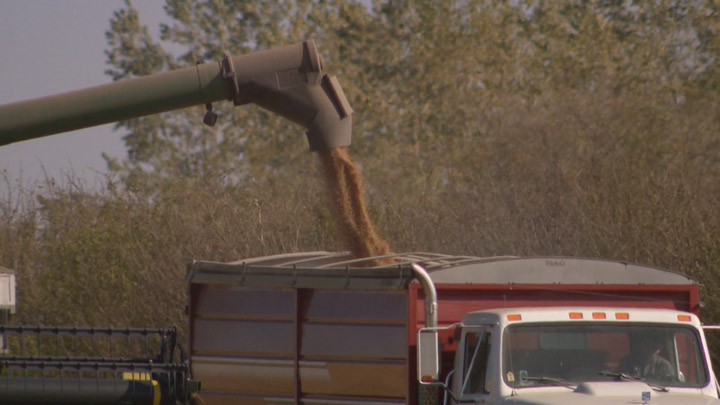Saskatchewan Crop Insurance Corporation (SCIC) processed a historic number of claims in 2021.

This was due, in part, to the prolonged drought in the province, said Saskatchewan Agriculture Minister David Marit.
SCIC received approximately 30,000 claims in 2021 compared with the five-year average of roughly 7,800 post-harvest claims, he said.
“Producers across the province faced dry conditions and high temperatures, causing crops to deteriorate,” Marit said.
“Combined with hail storms, pests, and extreme winds in some of the areas of the province, creating further damage, Saskatchewan producers faced a difficult season.”
The total value of the payout for crop insurance claims in 2021 was approximately $2.4 billion, said SCIC president Jeff Morrow.
Producers are facing a crop insurance premium increase in 2022, along with an increase in coverage.
Average coverage through the Saskatchewan Crop Insurance Corp. (SCIC) will reach a record $405 per acre, a 48 per cent increase from last year.
SCIC said the higher coverage amount is due to higher commodity prices and increased yield coverage.
Premiums are increasing to $12.05 per acre in 2022 compared with $8.59 in 2021.
- ‘Shock and disbelief’ after Manitoba school trustee’s Indigenous comments
- ‘Super lice’ are becoming more resistant to chemical shampoos. What to use instead
- Is home ownership only for the rich now? 80% say yes in new poll
- Invasive strep: ‘Don’t wait’ to seek care, N.S. woman warns on long road to recovery
Marit said crop insurance coverage will reach record levels in 2022 due to higher commodity prices and increased yield coverage.
“However, the average premium rate is lower due to the strong production of 2020,” he said.
“As there is a one year lag when calculating premium rates, 2021 production is not used until 2023.”
He also believes that new changes to the crop insurance program will build on previous enhancements.
Changes were made to the forage and corn rainfall insurance programs after last year’s provincewide drought-affected pasture and hay land moisture.
A heat adjustment factor was added to the rainfall data used to calculate the programs. When the temperature hits at least 31 C, precipitation amounts are reduced in the monthly per cent of normal calculation.
Morrow said they will subtract one millimetre of precipitation every day their weather stations record a temperature of 31 C, not factoring in humidex level.
“So for July, let’s say there are five days that reach 31 degrees or higher. Then we’re going to take five millimetres off the total for calculating the monthly precipitation,” he said.
“So it’s really to acknowledge that when we’re experiencing that extreme heat, all the moisture that doesn’t fall is certainly not available for forage yield.”
There are reasons why the baseline for the program was set at 31 C, said Lorelei Hulston, SCIC’s vice-president of operations.
“The 31 degrees was selected as the temperature where precipitation was basically evaporating at a rate that it’s not being as usable for the plant or as plant available moisture,” she explained.
“We were picking a point where we thought it would be valuable for producers without actually causing a too high an increase in premium.”
She added that picking a temperature that was much lower would be cost-prohibitive for the program.
Marit believes a higher intake of producers enrolling in the crop insurance program will continue in 2022.
“In 2021, the average rainfall insurance program insured 3.15 million forage acres, compared to 2.33 million acres in 2020,” he said.
“Last year, SCIC paid over $50 million in claims to producers, a record for the program, with (an) average payment of approximately $34,000.”
Producers have until March 31 to apply, reinstate, cancel or make additional changes to their crop insurance contracts.
SCIC is also making changes to its contract price options program.
Under the program, producers can use their contract prices to blend with the crop insurance base price for higher coverage.
SCIC said this establishes an insured price that is reflective of the actual market value producers would receive for their crops.
It will now be available for all commercial crops, including fababeans, Khorasan wheat, fall and spring rye, sunflowers, triticale, winter wheat, extra-strong wheat, hard white wheat, all classes of chickpeas, caraway, irrigated dry beans and soybeans.
“We appreciate the changes SCIC has made to the contract price option,” said Shaun Dyrland, chair of Saskatchewan Pulse Growers.
“It could be an attractive option for pulse growers with the new inclusion of chickpeas, soybeans and fababeans.”
Producers have until March 31 to select the crops they want covered under the contract price option. Contracts must be submitted to SCIC by May 31.




Comments